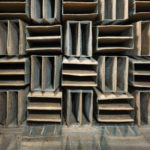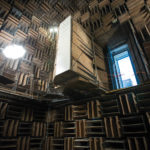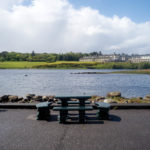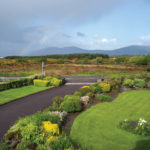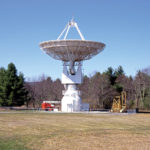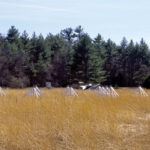Sites of Detachment documents locations in which suppressing the noise of everyday life becomes a way of bringing greater awareness to scientific endeavors. This exhibit underscores how the excess of invisible information that clogs our atmosphere is counter-productive to the highest levels of human thought. I chose three sites to explore:
The Green Bank Observatory at the United States National Radio Quiet Zone
In 1958, an area of West Virginia and Maryland comprising some 34,000 square kilometers was designated the United States National Radio Quiet Zone to protect the sensitive Green Bank Telescope, the world’s largest fully steerable radio telescope andthe National Security Administration’s Sugar Grove monitoring site. Radio transmissions, wifi networks, cellular phones, and—in the very center—even digital cameras and vehicles with spark plugs are banned to prevent interference. A few dozen individuals claiming to suffer from hypersensitivity to electronics have moved to this area, seeking relief.
Kerry International Dark-Sky Reserve
The only Gold Tier Dark-Sky Reserve in the Northern Hemisphere, located on the Iveragh peninsula in western Ireland. Far from most sources of artificial light, cut off from the rest of the island by mountains known as “the McGillycudy Reeks,” this is one of the last remaining places in which astronomers can see the night sky. Coincidentally, perhaps, the European terminal of the first transatlantic telegraph cable was located within the area that later became the Reserve.
Bell Labs Anechoic Chamber
Constructed in 1940, the Anechoic Chamber at Bell Labs’ Murray Hill facility is the first wedge-based anechoic chamber. Fiberglass wedges are tuned to absorb 99.995% of the “incident acoustic energy” above 200 Hz. The Chamber was used for critical research into loudness curves and the responses of microphones.
